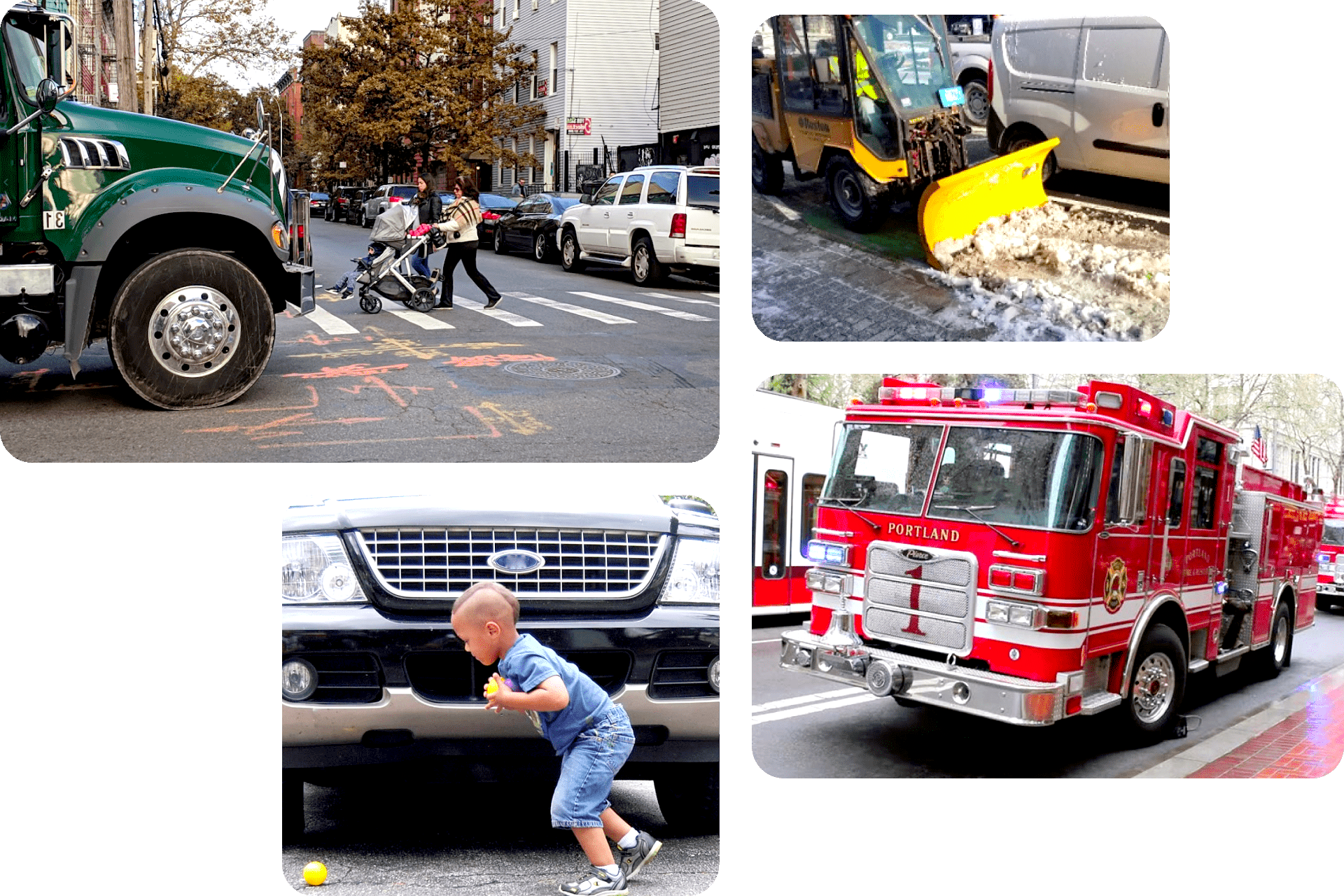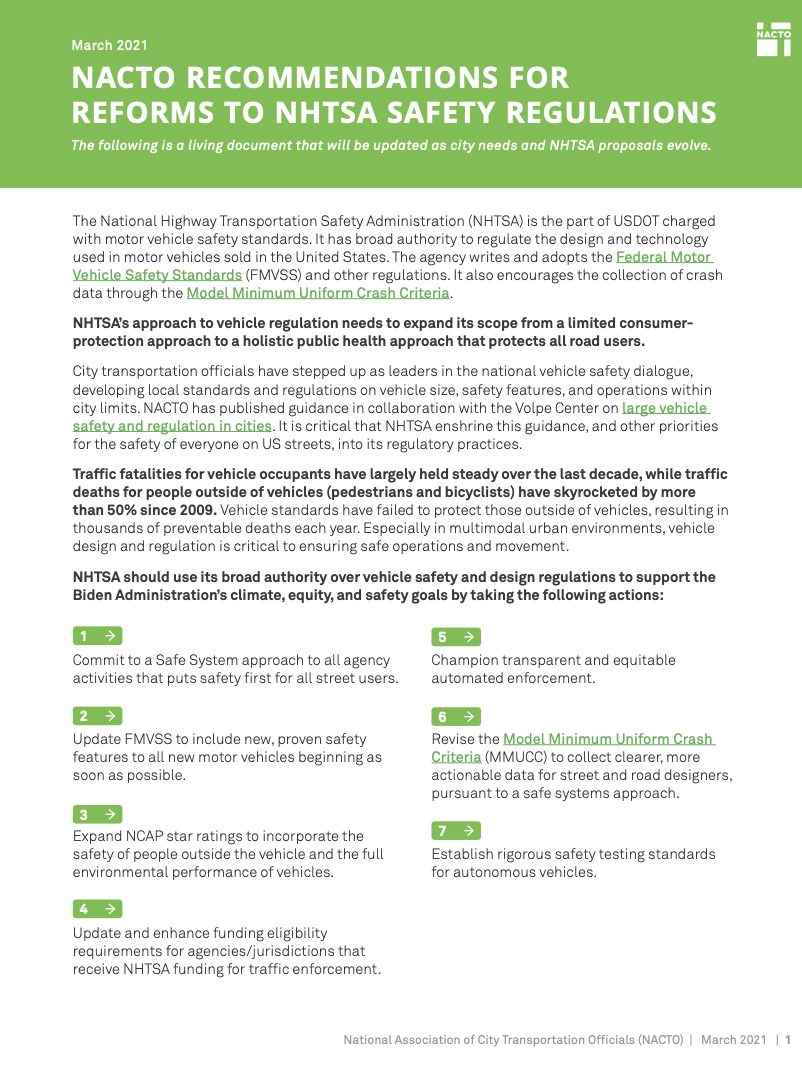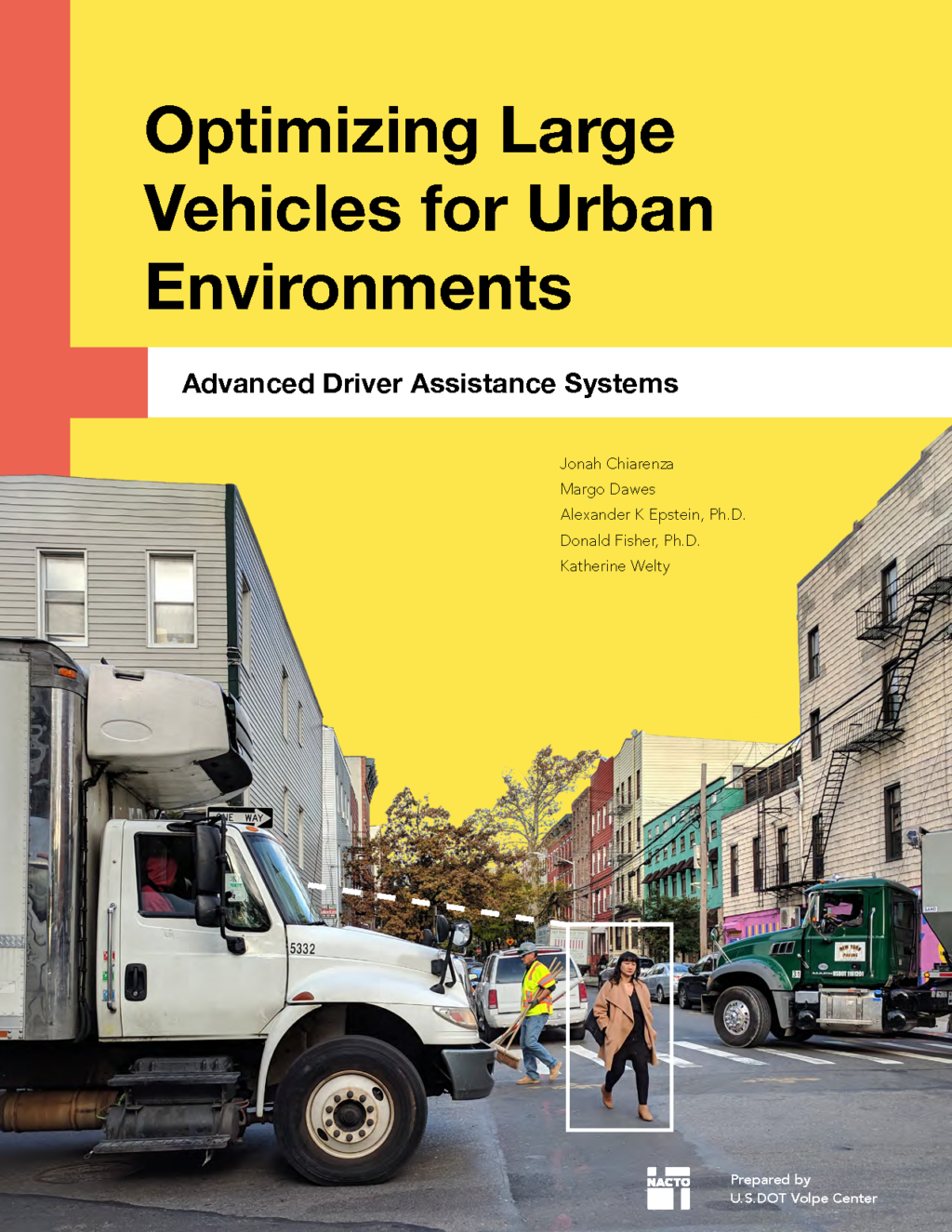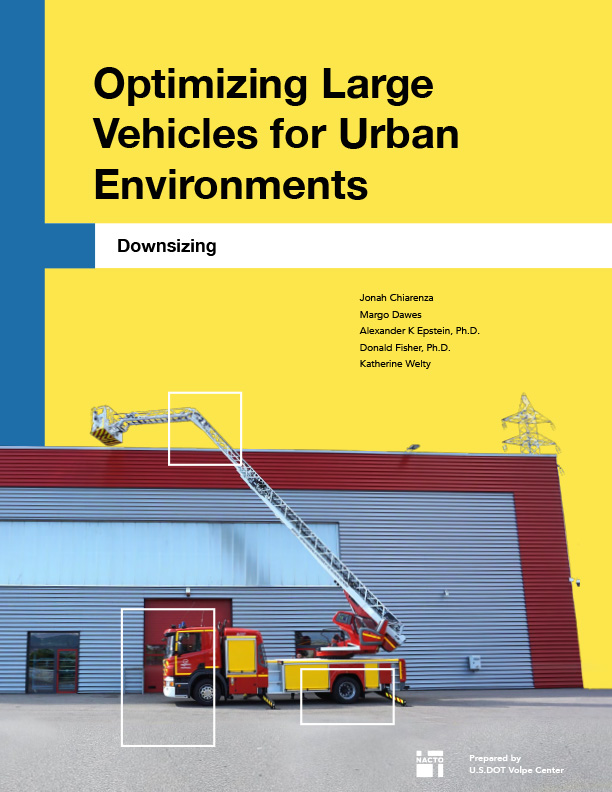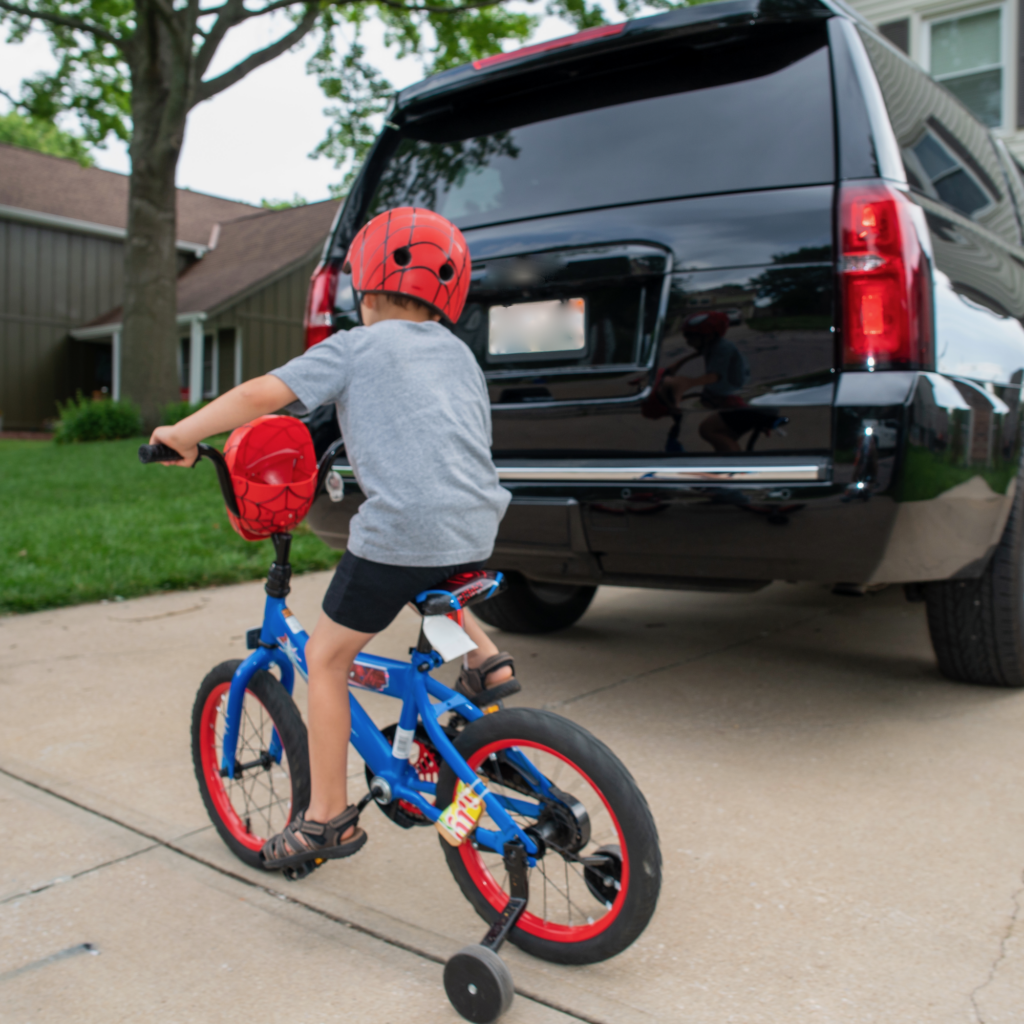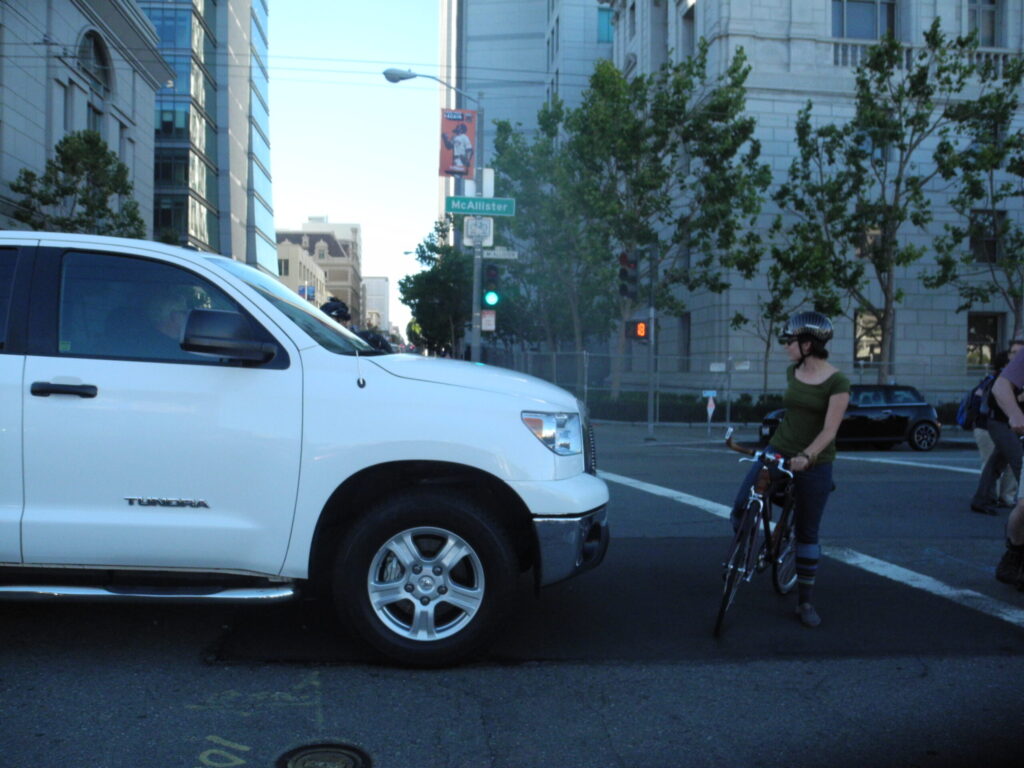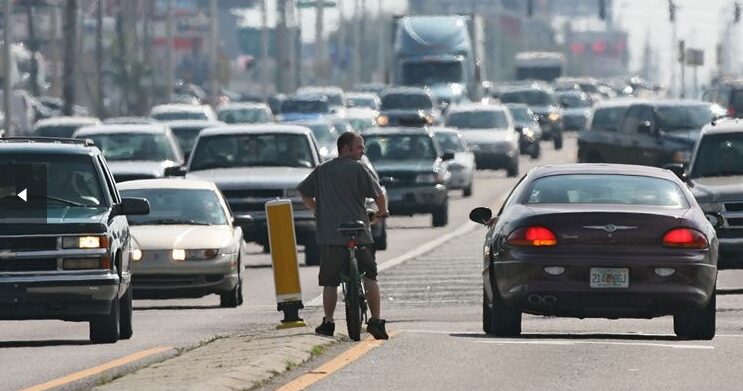Research shows that the growing size and weight of vehicles on our roads, along with reduced visibility from the driver’s seat, are directly linked to increased traffic fatalities. Cities working to design and operate safe streets are unable to achieve their goals without changes to how vehicles are designed.
NACTO works with its members to elevate the need for better vehicle design. We advocate for regulations that make our streets safer for everyone. We also help cities understand how to update or retrofit their fleets to enhance safety.
NACTO collaborated with the Volpe National Transportation Systems Center on Optimizing Large Vehicles for Urban Environments, which details the opportunities that public agencies have to reduce traffic fatalities with improved vehicle design. By updating their fleets–and requiring safer vehicles from their contractors–municipalities can positively change safety outcomes locally.
To support those efforts, NACTO advocates for changes to national vehicle design standards. Our work has included:
- Encouraging revisions to the Model Minimum Uniform Crash Criteria (MMUCC), which sets standards for collecting data on motor vehicle crashes.
- Pursuing changes to the New Car Assessment Program
- Urging the National Highway Traffic Safety Administration (NHTSA) to require automatic emergency braking for cars, SUVs, and light-duty trucks
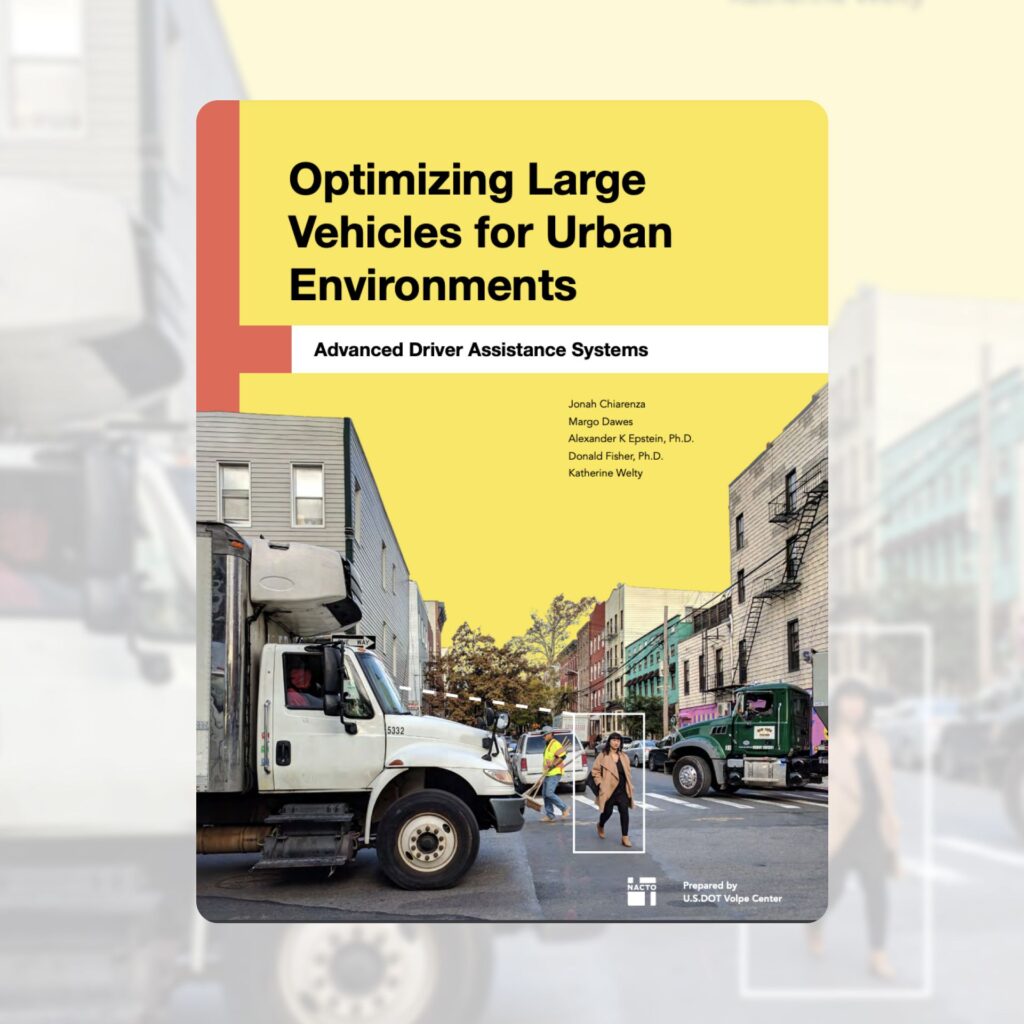
Policy Guide
Optimizing Large Vehicles for Urban Environments
Reports the effects of vehicle design on street safety and the opportunities to improve safety through vehicle design.
Photo Credits: Child and car via Kids and Car Safety, snow removal via Boston Department of Public Works, downsized fire truck via City of Portland
